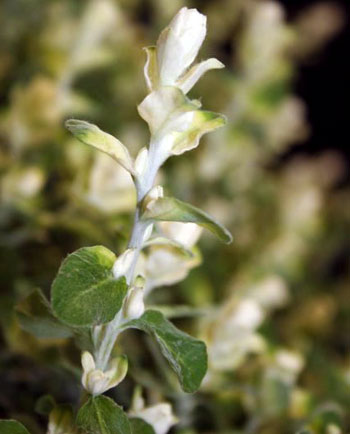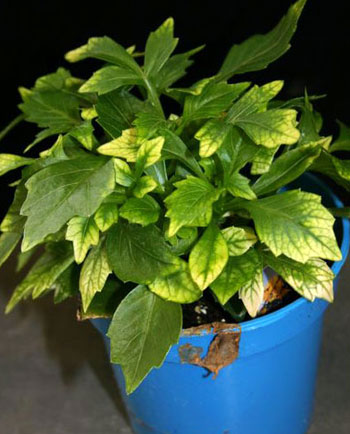Herbicide storage in the greenhouse is risky business
Be aware of how off-season storage of herbicides in an empty greenhouse may impact next year’s crop.
Most greenhouse growers understand that controlling weeds in the greenhouse is very important not only for aesthetics, but also for pathogen and insect control purposes (see the Michigan State University Extension article “Weeds in the greenhouse: More than unsightly”). But what about storing herbicides in the greenhouse? Solar radiation and high temperatures often found in greenhouses can not only reduce the effectiveness of the herbicide, but also impact the integrity of the container, which increases the likelihood of volatilization.
Volatilization is a process whereby a liquid or a granular substance in the presence of moisture becomes a gas. Liquid or granular herbicides may volatilize and then become trapped in the greenhouse, landing on and potentially damaging or killing desirable plants. Herbicides that have volatilized from spray or storage in the greenhouse can last for many months after the herbicide has been sprayed or removed. The potential for stored herbicides to volatilize increases if a granular product is stored in leaky bags or if a liquid product is stored in a punctured plastic container.
Consider the following example. A pre-emergent herbicide intended for use in an outdoor nursery is stored inside an empty greenhouse for the winter. During that time, the product volatilizes and is deposited on surfaces within the greenhouse, such as plastic, benches, etc.. The containers of herbicide are removed from the greenhouse before spring crop production begins. However, volatilization of the deposited residue continues to occur the following spring, well after the herbicide had been removed. This causes damage to spring crops (Photos 1-2) that are grown in the contaminated greenhouse. Note that the herbicide was never even applied in the greenhouse and yet damage still occurred. Herbicide damage symptoms vary by crop, but may include discolored, thickened, stunted or whitening of leaves. Distortion and cupping may also occur.


Photos 1-2. Potential herbicide damage of greenhouse plants caused by volatilization of herbicides
stored in an empty greenhouse. Plant damage occurred months after the herbicide was removed
and crops were planted. The plants recovered upon being moved to a different greenhouse.
So where should you store herbicides? Always read the “storage and disposal” section of the herbicide label for instructions. If the label is lacking such information, contact the manufacturer for proper storage information. In general, herbicides and other pesticides should not be stored near heat, sparks or open flame. In addition, they should only be stored in their original containers and should be kept in a dry and moderately temperate, locked room that is well-ventilated and not located near current or future crop production areas.



 Print
Print Email
Email


